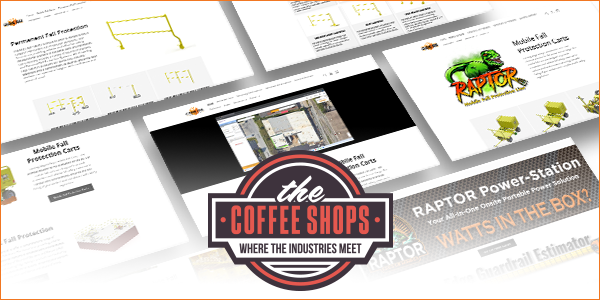The Current Way of the World

By Lauren White, RCS Editor.
Industry experts share how businesses are coping with shortages of material and labor amidst price increases and recommendations for how to navigate these uncharted territories.
We’ve all seen the signs, “Help Wanted,” “Now Hiring,” “Signing Bonus Offered,” the list goes on. It’s no secret there is a labor shortage in the roofing industry, but it has now spread to numerous industries, causing a trickle-down effect that’s wreaking havoc across the nation and the supply chain. As we continue to navigate the Coronavirus pandemic, many companies are struggling to maintain steady operating hours, find and hire workers, not to mention keep repairs and projects on track. Over the past few months National Women in Roofing (NWIR) and the National Roofing Contractors Association (NRCA) have hosted webinars and Town Halls to help shed some light on this current way of the world and how they and others are managing during these challenging times.
Many companies have been affected by employee and material shortages. Laptops can’t be built because metal isn’t available, restaurants are closing an extra day because they don’t have staff, items are stuck on barges on the coasts and in the ports because there aren’t enough people to unload them and shelves and warehouses are without product.
Everyone is doing what they can to find materials for their projects, from small companies to large operations. There aren’t enough raw materials and workers available to manufacture crucial products for the current demand, leaving companies without sufficient inventory for their customers. Manufacturers are having to tell customers who place their orders now (in October) that their materials could be in stock anywhere between the end of the year or as late as February or March 2022, if all goes accordingly. On top of these extremely long lead times, prices have increased dramatically, sometimes being three times more expensive. This has been difficult to navigate and communicate to not only the contractor but the homeowners and building owners.
NWIR Oregon Council webinar
So, what have the experts shared as strategies to use during these times? Members from the NWIR Oregon council had these recommendations:
-
Stay in front of the customer – Educate clients on the volatile situation up front. Transparency is key for a win-win situation for you and your customers. Provide online resources for customers so they know this is a real situation and don’t think you’re taking advantage of the circumstances. Members from NWIR suggested sending a letter with your bid explaining the unpredictability of pricing and materials in the industry.
-
Add wholesale prices to bids – Showing customers that your wholesale costs have increased might help them understand why their project bids are increasing too.
-
Provide budget numbers – Instead of showing fixed pricing, use current market prices for bids and note that these materials will be charged at market price once delivered, which could mean a price increase or deduction.
-
Communicate! Be honest and upfront with contractors. Provide date changes for deliveries.
-
Be flexible and willing to pivot - Many companies are finding alternative ways to get products delivered and are even giving customers the option to pre-purchase materials and store them at their home or facility. They are also offering customers options for alternatives, such as temporary roof systems or switching to a roof system that will be available sooner than the system originally bid.
-
Document everything in writing – Even if you have a conversation over the phone, follow up with an email documenting that you had the conversation, summarize the key points you discussed and what you did or didn’t agree to, that way you’re covered if anything goes awry.
-
Take a partnership approach – Work with your client as a team by providing alternative options for roof systems, materials or project timelines.
NRCA supply chain summit
NRCA CEO Reid Ribble, CNA Underwriting Director Erin Cook and NRCA VP of Technical Services Mark Graham provided an overarching explanation for the supply chain challenges. Between the coronavirus pandemic, the Texas shutdown due to the ice storm and severe weather events, manufacturers weren’t able to get the materials needed to produce products FIX. For this reason, facilities haven’t been able to run at full capacity, resulting in this severe backlog we’re experiencing. Panelists recommend:
-
Engaging legal counsel – It’s important to look at and understand your options and know you are covered legally should something happen. A free half hour consult with Trent Cotney can help you make sure you are protected.
-
Be aware of reduced SKUs – Many manufacturers are decreasing their SKUs, or individual products available, especially in the residential market; instead of having 25 options for a particular shingle, there’s now four or five. In doing this, manufacturers can keep producing what they have materials for at full capacity.
-
Check your insurance - Erin Cook suggested talking to an insurance agent/broker concerning:
-
Personal property limits – especially if you have more materials in stock in your field/warehouse now than you normally do
-
Installation floater limit
-
Extra expense coverage – this provides coverage for expenses that go above and beyond your normal coverage
-
Inflation guard on your property policy
-
The panelists agreed that looking back, 2020 worked extremely well given the circumstances. Mark Graham noted, “This year is an entirely different dynamic; we’re dealing with material shortages, price volatility, a little bit what we saw last year but nothing to the magnitude we’re seeing now.”
NRCA Telephone Town Hall
2,774 roofing industry professionals tuned in to a Telephone Town Hall put on by the National Roofing Contractors Association (NRCA) and moderated by NRCA Chairman of the Board Rod Petrick. He was joined by seven executives from the industry including:
-
John Altmeyer, executive chairman of GAF Commercial Roofing
-
Jamie Gentoso, president of Firestone Building Products
-
Josh Kelly, senior vice president of OMG Roofing Products
-
Nick Shears, president of Carlisle Construction Materials
-
Joe Smith, president of Johns Manville Roofing Systems
-
Brian Whelan, executive vice president of SIKA North America
-
Trent Cotney, CEO of Cotney Attorneys & Consultants and NRCA general counsel
Each panelist shared a brief synopsis of the struggles their companies are facing amidst the current shortages. Key takeaways from this Town Hall included:
1 - Tariff trouble
The supply chain has been struggling since tariffs took effect in 2018, shutting down the steel supply from China, which is responsible for approximately 50% of the steel for the U.S. Many companies started sourcing steel in the U.S., but there isn’t enough capacity to support the demand, thus adding to the strain on the supply chain. Josh Kelly with OMG Roofing shared that they’re currently working with 19 different suppliers of steel worldwide, doing everything they can to get steel from every corner of the world to meet demand.
In 2019, tariffs on Canada and Mexico were eliminated, which helped the supply chain start to get on track, but then the COVID-19 pandemic hit and everything changed – people started working from home, companies had to stop production to implement safety protocols and the supply chain suffered again.
2 – Legal guidance
Trent Cotney shared that there are certain questions that cannot be answered given the concerns. He also mentioned that general questions are always better than specific because everything can change in an instant. Some things to avoid discussing are:
-
Specifics on current or past prices
-
Gross or net profit margins
-
Stabilizing prices
-
Cash discounts or credit concerns
-
Controlling sales or production
-
Deals with anticipated wage rates
3 – Extreme weather
The severe weather events that have hit the U.S. in the past couple years have caused significant ripples in the supply chain. The Gulf region is the largest processing center for petrochemicals in the world. These chemicals are a main component in many roofing materials. The ice storm in Texas, in addition to tropical storms and hurricanes in the Gulf region have limited the industry’s ability to source these high-quality chemicals.
4 – Trucking struggles
Ports are seeing bigger backlogs than they’ve ever experienced; while it used to take seven weeks to get an order delivered, it now takes 24 weeks. And when severe weather hits, facilities are shut down, rail cars are held back and an overall backup occurs. Therefore, air freight and tanker trucks are in great demand because ships and railways are so slow and unpredictable.
5 – Getting everyone on the same page
Education and communication are key in circumstances like this. Rudy Gutierrez, president and CEO of Shell Roofing Solutions, shared that contractors in the field are receiving inconsistent messaging and asked where to turn for updated information to take to jobsites. There are many resources available on www.nrca.net/legal and Trent shared that NRCA is currently working on a white paper that will be online and can be distributed.
6 – Working when they can
Regular facility shutdowns are scheduled to provide necessary maintenance to equipment and for safety reasons. While they’re typically scheduled throughout the year, many facilities are choosing not to put anything on the calendar for a couple reasons – the first is to keep up with demand, the second is because many facilities have performed the necessary maintenance and routine checkups when they’ve been shut down. This has allowed facilities to operate at full capacity when they do have the materials they need.
Throughout all of the webinars, meetings, Town Halls and day-to-day conversations, one thing has remained true, “We’re all in this together.” This may be the way of the world currently, but Brian Whalen said it perfectly, “We have to find better ways to navigate this nightmare of a situation, together."
Stay up to date with the latest roofing industry news when you sign up for the RCS Week in Roofing e-news.






















Comments
Leave a Reply
Have an account? Login to leave a comment!
Sign In